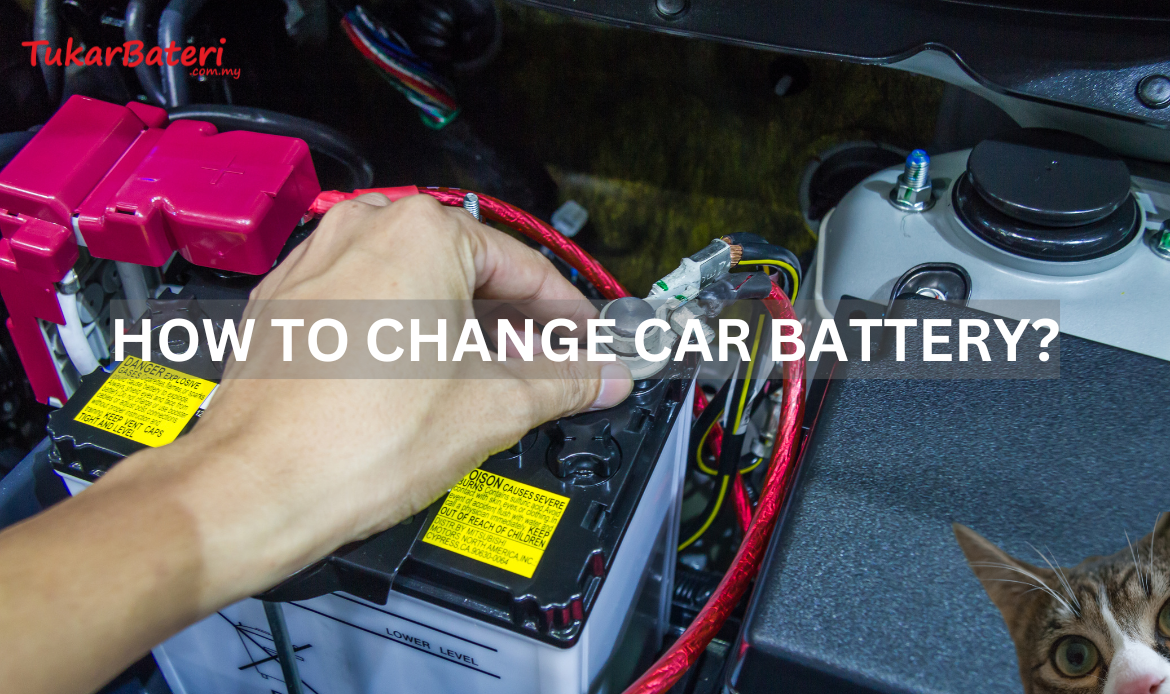Table of Contents
Part 1: Removing the Old Battery
1. Park on a level surface in a secure area and turn off your vehicle
2. Put on safety gear and pop your hood
4. Disconnect the negative cable first and secure it with a cable tie
5. Disconnect the positive cable next and secure it with a cable tie
Part 2: Installing the batteries
1. Clean the battery terminals
2. Buy a suitable new battery for replacement
3. Secure the new battery to the bracket and grease the terminal
Car batteries, like all things, have a lifespan. They don’t come with an expiry date, and even with regular use, they can deteriorate. If you’ve noticed your headlights dimming or your car needs a jump-start, it clearly indicates that your car battery might need replacing.
Ready to learn how to replace your car battery at home? Let’s get started!
Part 1: Removing the Old Battery
1. Park on a level surface in a secure area and turn off your vehicle
If possible, avoid changing your battery on the side of the road. Find a safe, well-ventilated workplace away from traffic, sparks, open flames, or water. Engage your parking brake and remove the keys from the ignition to ensure no power goes to the battery.
A garage or driveway is ideal for changing your battery if the area is well-ventilated (e.g., open the garage door).
Disconnecting the battery will reset the clock, radio, navigation, and alarm settings. Before starting, ensure you know your alarm code; if you don’t, check your owner’s manual.
2. Put on safety gear and pop your hood
Batteries contain a highly corrosive sulfuric acid electrolyte solution that can burn your skin and produce flammable hydrogen gas. To protect yourself, wear insulated work gloves and safety goggles. Open your hood and prop it up with a rod if needed.
Remove any metal jewellery, such as watches or rings, to avoid the risk of electric shock. Also, wear old clothes you don’t mind getting dirty or greasy.
3. Locate the battery
Look for the battery at the corner of the engine bay. Find the rectangular battery box with 2 cables attached to it. If you own a brand-new car, the battery might be underneath the plastic cover. The battery might be located in the trunk under the hood for some vehicles.
4. Disconnect the negative cable first and secure it with a cable tie
Always disconnect the negative cable before the positive cable to prevent electrical shorts. The negative battery terminal is typically black and may have a minus sign (-) near it. Remove any plastic cover, loosen the negative cable clamp with a wrench and slide the cable off the terminal.
Secure the negative cable to the engine bay with a cable tie, ensuring it does not touch any metal parts. Depending on your vehicle, you may need a 7-mm, 8-mm, 10-mm, or 13-mm wrench to remove the cables. However, if your battery terminals have quick-release clamps, you won’t need tools to remove the cables.
5. Disconnect the positive cable next and secure it with a cable tie
The positive terminal is usually red and has a (+) sign. Remove the plastic cover over the terminal, use a wrench to loosen the positive cable clamp, and remove the cable from the terminal.
Ensure that the positive and negative cables do not touch each other or any metal surfaces, as this can cause a dangerous electrical short.
Part 2: Installing the batteries
1. Clean the battery terminals
Battery acid is corrosive. Use sandpaper to clean the terminal and carefully remove the corrosion. Avoid getting it on your skin or clothes.
2. Buy a suitable new battery for replacement
Refer to your old car battery and look for details such as the size, dimensions, and parts number. The easiest way is to call us at 011-1608 1608 and tell us your car model and year of make. We will help you find the appropriate replacement.
Automotive batteries come in different sizes and electrical capacities, so purchasing one designed for your specific vehicle is essential. If the battery isn’t the correct size, it may not fit properly in its designated compartment.
3. Secure the new battery to the bracket and grease the terminal
Place the new battery and secure it to the bracket. Tighten the bracket and secure the battery so it won’t vibrate or move around while you drive your car. Then, apply a thin layer of lithium grease to each terminal to prevent corrosion.
Make sure to place the battery in the same way as the old one.
4. Connect the positive cable
Carefully undo the cable tie securing the positive cable to the engine bay, ensuring the end does not touch any metal surfaces. Place the cable over the terminal and tighten it with a wrench. If the battery has a cover for the terminal, put it back on.
When reconnecting the battery, always secure the positive terminal before the negative terminal to avoid inadvertently completing the electrical circuit before all connections are secure.
5. Connect the negative cable
Repeat the same step, remove the cable tie, and reattach the negative cable to the negative terminal. Tighten the clamp and make sure the negative cable does not come into contact with metal, as this might cause a dangerous electrical discharge.
6. All done! You may start your vehicle
Ensure you’ve removed all tools under the hood, then close it. If you’ve done everything correctly and the battery was indeed the cause of your power issues, your car should start right up. Enter the alarm code if needed.
Verify that all electronic devices are functioning properly, then reset your clock, radio, and navigation system.
Before changing your car battery, you can visit any TukarBateri outlet for battery testing. Our specialist will assist you with your car battery testing for FREE! Call us on 011-1608 1608 for more info!
Side Note
- Battery location might vary for each type of car. It can be found in the trunk too.
- Larger vehicles have more than 1 battery.
Call Us Now!!!
Free Car Battery Delivery and Installation
We Cover:
Klang Valley | Penang | Terengganu | Johor | Kelantan | Malacca | Perak


